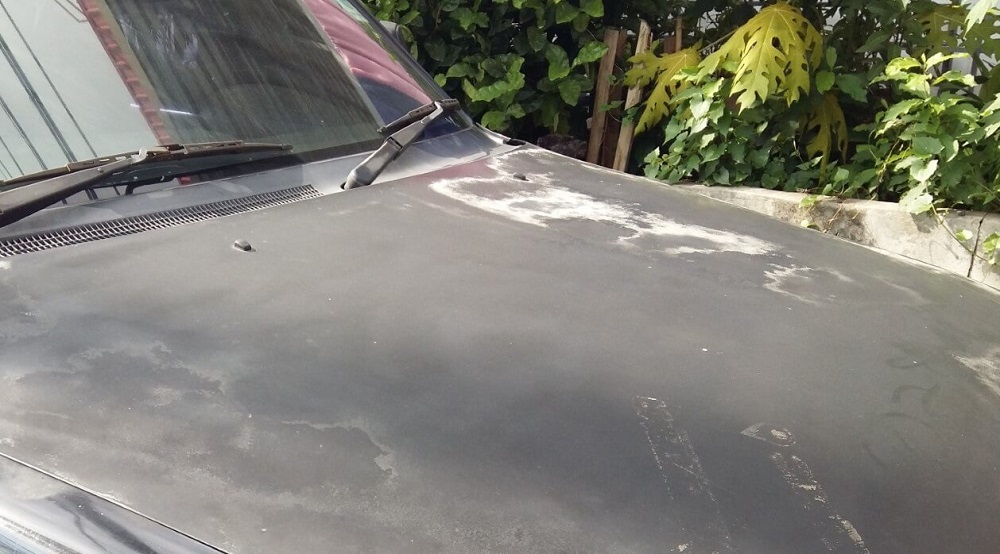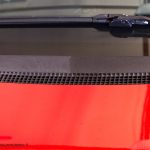Have you ever found yourself cringing at the sight of burnt paint on your beloved car? Whether it’s a result of prolonged sun exposure, accidental contact with hot surfaces, or a misguided DIY paint attempt, fear not – there’s a way to restore your vehicle’s former glory. In this detailed guide, we’ll take a slow and thorough journey through the process of fixing burnt paint on your car, providing step-by-step solutions that you can effortlessly implement at home.
Understanding the Causes of Burnt Paint
Why Does Paint Burn on Cars?
Understanding the root causes of burnt paint is the first step toward effective restoration. Prolonged exposure to intense sunlight is a common culprit, causing the paint to fade and lose its luster over time. Additionally, accidental encounters with hot surfaces, such as exhaust pipes or engine components, can lead to localized burning. Even well-intentioned DIY paint jobs can sometimes result in unintended damage.
Assessing the Damage
Identifying the Severity
Before diving into the restoration process, it’s crucial to assess the extent of the damage. Is it a superficial burn affecting only the top layer, or has it penetrated deeper into the paint? This evaluation will guide your restoration approach, ensuring that you address the specific needs of your car.
Gathering the Necessary Tools and Materials
Your Restoration Arsenal
Successful burnt paint restoration requires a set of essential tools and materials. Gather items such as sandpaper, rubbing compound, polishing compound, touch-up paint, and a clear coat. Having these on hand before starting the restoration process ensures a smooth workflow.
Step-by-Step Restoration Process
1. Clean the Affected Area
Begin your restoration journey by giving the burnt area a thorough cleaning. Use a mild automotive detergent to remove dirt and debris, providing a clean canvas for the subsequent restoration steps.
2. Sand the Burnt Area
Gently sand the burnt paint using fine-grit sandpaper. This step is crucial for removing the damaged layer and creating a smooth surface for the upcoming treatments. Take your time, and pay attention to detail to achieve the best results.
3. Apply Rubbing Compound
Once the sanding is complete, apply a rubbing compound to buff the sanded area. This helps eliminate any remnants of burnt paint and prepares the surface for the next stage of restoration. Remember, patience and precision are your allies in this process.
4. Polish for Smoothness
The polishing compound comes into play to restore a smooth finish. This step not only enhances the shine of the paint but also ensures that the repaired area seamlessly blends with the rest of the car. Think of it as giving your vehicle a spa treatment – a little pampering goes a long way.
5. Apply Touch-Up Paint
Choosing the right touch-up paint is crucial for a successful restoration. Opt for a high-quality paint that matches your car’s original color. Apply the paint carefully, layer by layer, allowing each coat to dry before adding the next. This meticulous approach guarantees a flawless finish. (See Also: Can You Paint Over LINE-X? Tips and Tricks for a Flawless Finish)
6. Add Clear Coat
The final touch involves applying a clear coat to protect the newly painted area. This additional layer serves as a shield against future damage, ensuring that your restoration efforts stand the test of time. Consider it the proverbial cherry on top, adding that extra layer of gloss and protection.
Tips for Preventing Burnt Paint
Guarding Against Future Damage
To prevent future occurrences of burnt paint on your car, consider incorporating these preventive measures:
- Use Car Covers: Shield your vehicle from the sun’s harsh rays by utilizing a car cover, especially during peak sunlight hours.
- Park in the Shade: Whenever possible, park your car in shaded areas to minimize sun exposure. A little shade can go a long way in preserving your paint.
- Regular Waxing: Give your car the love it deserves by applying wax regularly. This not only enhances its aesthetic appeal but also provides an additional protective layer to the paint.
Expert Tips for Burnt Car Paint Restoration
As you embark on the journey to restore burnt paint on your car, consider these expert tips to elevate your restoration game. These insights will not only enhance the effectiveness of your efforts but also contribute to a longer-lasting and impeccable finish.
1. Early Intervention is Key
The moment you notice signs of burnt paint, take action promptly. Early intervention can prevent the damage from worsening and make the restoration process more manageable. Small burns are generally easier to fix and require less extensive work.
2. Choose Quality Over Quantity in Touch-Up Paint
When selecting touch-up paint, prioritize quality over quantity. Invest in a high-quality paint that precisely matches your car’s original color. This ensures a seamless blend and a professional-looking finish that stands up to scrutiny.
3. Practice Patience During the Drying Process
Allow each layer of paint and clear coat to dry thoroughly before applying the next. Rushing this process can result in uneven finishes and compromise the overall quality of your restoration. Patience is indeed a virtue in the world of burnt paint restoration.
4. Test in an Inconspicuous Area First
Before applying any compounds or paints, conduct a small test in an inconspicuous area of your car. This allows you to assess compatibility and ensure that the products you’re using won’t cause adverse reactions with your car’s existing paint.
5. Invest in a High-Quality Clear Coat
The clear coat is your car’s first line of defense against the elements. Invest in a high-quality clear coat to provide long-lasting protection to the restored area. This extra layer acts as a shield, preserving the integrity of your paintwork.
6. Consider Professional Assistance for Extensive Damage
If the burnt paint damage is extensive or if you’re uncertain about your restoration skills, consider seeking professional assistance. Auto body shops have the expertise and tools to tackle complex paint restoration tasks, ensuring a flawless finish.
7. Regularly Wax Your Car
In addition to the restoration process, incorporate regular waxing into your car maintenance routine. Waxing not only enhances the overall appearance of your vehicle but also adds an extra layer of protection against environmental factors that could lead to burnt paint. (See Also: Can You Spray Fluid Film Over Rust? Tips for Effective Rust Prevention)
8. Use UV-Protective Coatings
For further protection against sun damage, consider applying UV-protective coatings. These coatings act as a barrier, shielding your car’s paint from the harmful effects of prolonged sun exposure. Think of it as sunscreen for your vehicle.
9. Avoid Abrasive Cleaning Materials
When cleaning your car, steer clear of abrasive materials that could damage the paint. Opt for soft microfiber cloths and mild cleaning agents to preserve the integrity of your restored paintwork.
10. Monitor and Address Paint Issues Promptly
Regularly inspect your car for any signs of paint issues, and address them promptly. Whether it’s a minor scratch or the early stages of burnt paint, tackling problems early prevents them from escalating into more extensive and costly repairs.
By incorporating these expert tips into your burnt paint restoration process, you’ll not only achieve impressive results but also contribute to the long-term health and vibrancy of your car’s exterior. Happy restoring!
Frequently Asked Questions About Fixing Burnt Paint on Cars
Navigating the world of burnt paint restoration can be a daunting task, and you likely have questions. Fear not! In this FAQ section, we address common queries to provide clarity and guidance as you embark on the journey to revive your car’s paint. Let’s dive in.
1. What Causes Burnt Paint on Cars?
Answer: Burnt paint on cars can result from prolonged exposure to intense sunlight, contact with hot surfaces, or even poorly executed DIY paint jobs. Identifying the cause is crucial for effective restoration.
2. Can I Fix Burnt Paint at Home?
Answer: Yes, you can fix burnt paint at home. With the right tools, materials, and a systematic approach, you can achieve professional-looking results. Follow our comprehensive guide for step-by-step instructions.
3. How Do I Choose the Right Touch-Up Paint?
Answer: Opt for high-quality touch-up paint that precisely matches your car’s original color. Quality matters more than quantity in this case. Visit an auto supply store or consult your vehicle manufacturer for the best match.
4. Is it Necessary to Sand the Burnt Area?
Answer: Yes, sanding the burnt area is a crucial step. It helps remove the damaged paint layer and prepares the surface for subsequent treatments, ensuring a smoother and more even finish.
5. How Long Does the Restoration Process Take?
Answer: The restoration process duration depends on the severity of the damage and the specific steps involved. Plan for a day or more to allow sufficient drying time between coats of paint and clear coat. (See Also: Is POR 15 Metal Prep Necessary? Unveiling the Importance for Rust Prevention)
6. Can I Prevent Burnt Paint in the Future?
Answer: Absolutely. To prevent burnt paint, use car covers for sun protection, park in shaded areas when possible, regularly wax your car, and consider applying UV-protective coatings for added defense.
7. What if I Don’t Have Experience in Car Paint Restoration?
Answer: If you’re unsure about your skills or the damage is extensive, consider seeking professional assistance. Auto body shops have the expertise to tackle complex paint restoration tasks.
8. Can I Drive My Car Immediately After Restoration?
Answer: While some steps, like cleaning and sanding, might allow for immediate use, it’s advisable to wait for each layer of paint and clear coat to dry completely before driving to ensure a flawless finish.
9. Do I Need Special Tools for Burnt Paint Restoration?
Answer: While specialized tools like rubbing and polishing compounds are beneficial, you can find most tools, such as sandpaper and touch-up paint, at your local auto supply store. Having the right tools enhances the restoration process.
10. Will Restoring Burnt Paint Affect My Car’s Resale Value?
Answer: A well-executed burnt paint restoration can positively impact your car’s resale value by maintaining its aesthetic appeal. Potential buyers often appreciate a well-maintained exterior.
These FAQs aim to address your burning questions (pun intended) about fixing burnt paint on cars. If you have more inquiries or need personalized advice, feel free to reach out to automotive professionals for assistance. Happy restoring!
Final Thoughts
Fixing burnt paint on your car might initially seem like a daunting task, but with the right tools, a systematic approach, and a dash of patience, you can achieve professional-looking results. Take your time with each step, follow the instructions diligently, and soon enough, you’ll marvel at the transformation of your car’s appearance.
Remember, the key to a successful paint restoration lies in understanding the specific needs of your car and applying the appropriate techniques. Don’t let burnt paint diminish the beauty of your vehicle – take a leisurely and deliberate approach to restore its shine and showcase its true glory today!



